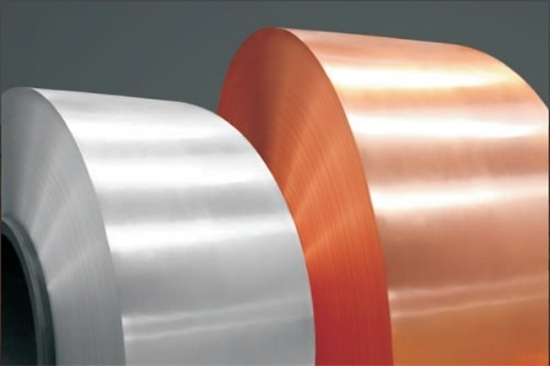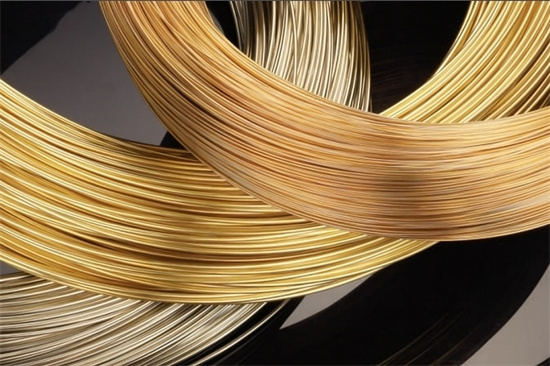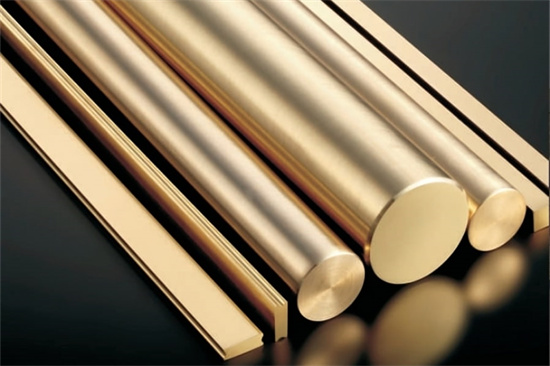


SG-CuSi3: A Comprehensive Overview of This Resilient Alloy
Low MOQ
Provide low minimum order quantity to meet different needs.
OEM & ODM
Provide customized products and design services to meet unique customer needs.
Adequate Stock
Ensure fast order processing and provide reliable and efficient service.
Customer Satisfaction
Provide high quality products with customer satisfaction at the core.
share this article
Table of Contents
When it comes to materials that offer a unique combination of mechanical strength, corrosion resistance, and excellent conductivity, SG-CuSi3 (a copper-silicon alloy) stands out as one of the top choices in the world of engineering and industrial applications. Whether you’re working on electrical systems, automotive components, or marine environments, SG-CuSi3 provides the durability and performance needed to get the job done.
In this guide, we’re going to explore everything you need to know about SG-CuSi3. From its composition and mechanical properties to its real-world applications and pricing, we’ll cover all the critical details. This guide is designed to give you a deep understanding of this alloy, whether you’re an engineer, designer, or just someone curious about high-performance materials.
Let’s dive into the world of SG-CuSi3 and see why it’s such a popular choice in so many industries.
Overview
What Is SG-CuSi3?
SG-CuSi3 is a copper-silicon alloy, specifically containing around 3% silicon (Si) and the remainder being predominantly copper (Cu). It is known for its excellent mechanical properties, high corrosion resistance, and good electrical conductivity. This alloy is particularly valued in applications where strength and ductility are essential, along with the need for reliable thermal and electrical conductivity.
What makes SG-CuSi3 truly stand out is its versatility. It’s used in a wide range of industries, from marine environments, where its corrosion resistance is crucial, to automotive and electrical applications. The alloy also has a high resistance to wear, making it suitable for components that endure frictional forces.
Key Features
- High strength and good ductility
- Excellent corrosion resistance, particularly in marine environments
- Good electrical and thermal conductivity
- High wear resistance, making it ideal for bearing applications
- Easily castable and machinable
Typical Uses
Commonly used in applications such as:
- Electrical components like connectors and switchgear
- Marine hardware due to its saltwater resistance
- Automotive parts, including valve guides and bushings
- Heavy machinery for wear-resistant components
Composition and Properties
Understanding the composition and mechanical properties of SG-CuSi3 is crucial for selecting the right material for your project. The addition of silicon to copper enhances several properties, such as strength, corrosion resistance, and wear resistance, making it a robust alloy for demanding applications.
Composition
| Element | Percentage (%) |
|---|---|
| Copper (Cu) | 96 – 97 |
| Silicon (Si) | 2.5 – 3.5 |
| Iron (Fe) | ≤ 0.2 |
| Zinc (Zn) | ≤ 0.1 |
| Lead (Pb) | ≤ 0.05 |
| Nickel (Ni) | ≤ 0.05 |
Mechanical and Physical Properties
| Property | Value |
|---|---|
| Tensile Strength | 250 – 350 MPa |
| Yield Strength | 150 – 250 MPa |
| Elongation | 15 – 25% |
| Hardness | 80 – 100 HB |
| Density | 8.4 g/cm³ |
| Thermal Conductivity | 60 – 80 W/m·K |
| Electrical Conductivity | 30% IACS |
| Melting Point | 980 – 1025°C |
Key Property Highlights
- Strength and Ductility: SG-CuSi3 provides a balance between strength and ductility, which is why it’s often used in applications that require formability without sacrificing durability.
- Corrosion Resistance: The presence of silicon enhances SG-CuSi3’s corrosion resistance, especially in saline environments, making it a prime choice in marine applications.
- Conductivity: While not as conductive as pure copper, SG-CuSi3 still retains good electrical conductivity, making it suitable for electrical components.
Applications Across Industries
Thanks to its unique combination of mechanical properties and resistance characteristics, SG-CuSi3 is used in a wide array of industries. Let’s take a closer look at some of the most common applications and why this alloy is selected for these specific uses.
Common Applications
| Industry | Typical Applications |
|---|---|
| Marine Engineering | Propellers, ship fittings, pump parts |
| Automotive | Valve guides, bushings, gears |
| Electrical | Switchgear, electrical connectors, terminals |
| Construction | Fasteners, architectural fittings |
| Aerospace | Bearings, hydraulic components |
| Heavy Machinery | Wear-resistant parts, gears, and bushings |
Detailed Application Breakdown
- Marine Engineering: SG-CuSi3’s excellent resistance to saltwater corrosion makes it an ideal option for marine components such as propellers, pump parts, and ship fittings. Its resistance to biofouling and corrosion ensures a long lifespan even in the harshest ocean environments.
- Automotive: The alloy’s high strength and wear resistance make it a popular choice for valve guides, bushings, and gears in automobiles. SG-CuSi3 can withstand high stress and friction, making it perfect for moving parts that require durability.
- Electrical Components: Thanks to its good electrical conductivity, SG-CuSi3 is often used in switchgear, electrical connectors, and terminals. While it doesn’t conduct as well as pure copper, it provides a balance of strength and conductivity that makes it ideal for high-wear electrical parts.
- Aerospace: In the aerospace industry, every component needs to be both lightweight and strong. SG-CuSi3 is used in bearings and hydraulic components, where its high wear resistance and strength-to-weight ratio make it a reliable choice.
Specifications, Sizes, and Standards
When selecting SG-CuSi3 for your project, it’s important to understand the specifications, sizes, and standards that apply to this alloy. These standards ensure that the material meets the necessary quality and performance requirements for your specific application.
Common Standards and Specifications
| Standard | Description |
|---|---|
| ASTM B584 | Specification for copper alloy sand castings |
| EN 1982 | European standard for copper and copper alloy castings |
| DIN 17665 | German standard for copper-silicon alloys |
| ISO 1338 | International standard for copper alloys in electrical applications |
Available Forms and Sizes
| Form | Size Range |
|---|---|
| Rod | Diameter: 10 mm to 200 mm |
| Bar | Diameter: 15 mm to 150 mm |
| Sheet/Plate | Thickness: 5 mm to 100 mm |
| Tube | Diameter: 20 mm to 100 mm |
| Custom Shapes | Available upon request |
Custom Sizes and Shapes
Many manufacturers offer custom sizes and shapes for SG-CuSi3, tailored to meet the specific requirements of your project. Whether you need a precision component or a large-scale casting, SG-CuSi3 can be customized to fit your exact specifications.
Price and Suppliers
The price of SG-CuSi3 can vary depending on factors such as market demand, quantity ordered, and the specific form of the material. Below, we’ve compiled a list of suppliers and pricing details to give you an idea of the cost when sourcing this alloy.
Suppliers and Pricing
| Supplier | Location | Price Range (per kg) | Lead Time |
|---|---|---|---|
| Aviva Metals | USA | $12 – $18 | 1-3 weeks |
| Shanghai Metal Corporation | China | $10 – $15 | 3-5 weeks |
| Smiths Metal Centres | UK | £8 – £12 | 2-4 weeks |
| LKM Metals | Germany | €9 – €14 | 2-3 weeks |
Factors Affecting SG-CuSi3 Pricing
Several factors can influence the price of SG-CuSi3, including:
- Market Conditions: Like many metal alloys, the price of SG-CuSi3 can fluctuate based on the global commodity market, especially the prices of copper and silicon.
- Order Volume: Larger orders tend to receive bulk discounts, while smaller quantities may incur higher costs per kilogram.
- Processing Needs: If you require additional machining or cutting services, this can increase your overall cost.
- Shipping and Delivery: Depending on the supplier’s location and your shipping needs, freight costs can also impact the final price.
Advantages and Limitations
While SG-CuSi3 offers impressive benefits, it’s important to weigh these against its limitations. Below, we’ve listed the advantages and limitations of using SG-CuSi3 in various applications.
Advantages and Limitations
| Advantages | Limitations |
|---|---|
| Excellent wear resistance: Ideal for high-friction applications like bearings and bushings. | Moderate machinability: it is harder to machine compared to other copper alloys, requiring specialized tools. |
| Superior corrosion resistance: Performs well in harsh environments and saltwater. | Higher cost: it is more expensive compared to other copper alloys. |
| Good electrical conductivity: Suitable for electrical components where both strength and conductivity are important. | Limited availability: May not be as readily available as more common copper alloys like brass or bronze. |
| High strength and ductility: Provides excellent mechanical properties for load-bearing applications. | Density: it is heavier than some alternative materials like aluminum, which may be a factor in weight-sensitive applications. |
SG-CuSi3 vs. Other Copper Alloys
When selecting a copper alloy for your project, it’s important to compare SG-CuSi3 against other commonly used copper alloys to determine which is the best fit for your specific application.
SG-CuSi3 vs. Other Copper Alloys
| Alloy | SG-CuSi3 | CuSn10 | CuAl8 | Brass (CuZn37) |
|---|---|---|---|---|
| Silicon Content | 2.5 – 3.5% | 0% | 0% | 0% |
| Corrosion Resistance | Excellent in saltwater | Excellent in seawater | Good in industrial environments | Moderate |
| Machinability | Moderate | Moderate | Good | Excellent |
| Cost | Medium | High | Medium | Low |
Key Comparisons
- SG-CuSi3 vs. CuSn10 (Tin Bronze): Both alloys share excellent corrosion resistance, but CuSn10 tends to be more expensive and has better strength at higher temperatures. SG-CuSi3, on the other hand, offers a more versatile balance of strength and conductivity.
- SG-CuSi3 vs. CuAl8 (Aluminum Bronze): CuAl8 provides higher strength and hardness, making it better for high-stress applications, but SG-CuSi3 excels in electrical conductivity and corrosion resistance, especially in marine environments.
- SG-CuSi3 vs. Brass (CuZn37): Brass is a more affordable option with better machinability, but it lacks the wear resistance and corrosion resistance of SG-CuSi3, especially in marine or high-wear applications.
Frequently Asked Questions (FAQ)
To round off this guide, here are some frequently asked questions about SG-CuSi3 to provide you with quick answers to common inquiries.
| Question | Answer |
|---|---|
| What is it used for? | It is used in marine engineering, automotive, electrical, and heavy machinery applications due to its strength, wear resistance, and corrosion resistance. |
| Is it suitable for marine environments? | Yes, it offers excellent corrosion resistance in saltwater, making it ideal for marine applications like propellers and pump components. |
| What is the tensile strength of SG-CuSi3? | It has a tensile strength ranging from 250 to 350 MPa, depending on its processing and application. |
| Can SG-CuSi3 be machined easily? | It has moderate machinability, and may require specialized tooling, especially for precision components. |
| How does SG-CuSi3 compare to CuSn10? | While CuSn10 offers higher strength at elevated temperatures, it provides better cost-efficiency and electrical conductivity. |
| Is it used in automotive parts? | Yes, it is commonly used in automotive components like valve guides, bushings, and gears. |
| What is the main advantage of SG-CuSi3? | It excels in its wear resistance, corrosion resistance, and good conductivity, making it a reliable choice in demanding environments. |
Conclusion
In conclusion, it is a high-performance copper-silicon alloy that offers an excellent balance of strength, corrosion resistance, and conductivity. Its versatility across industries like marine, automotive, electrical, and heavy machinery makes it a reliable material for components that require durability and performance.
By understanding the composition, properties, and applications of SG-CuSi3, you can make informed decisions on whether this alloy is the right fit for your project. With its robust characteristics and proven performance in harsh environments, it continues to be a top choice for industries that demand reliability and longevity in their materials.
Maybe you want to know more about our products, please contact us
Get Latest Price
About Met3DP
Product Category
HOT SALE
CONTACT US
Any questions? Send us message now! We’ll serve your request with a whole team after receiving your message.

Metal Powders for 3D Printing and Additive Manufacturing
COMPANY
PRODUCT
cONTACT INFO
- Qingdao City, Shandong, China
- [email protected]
- [email protected]
- +86 19116340731








